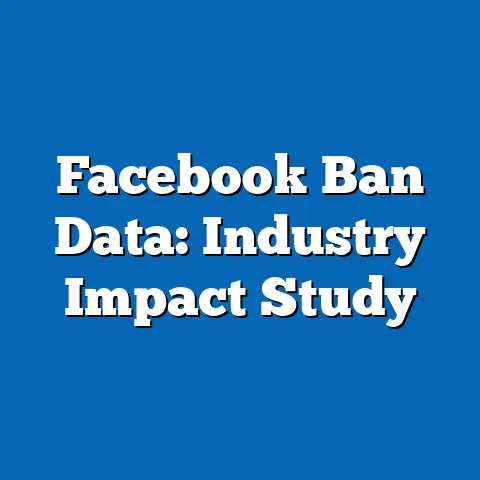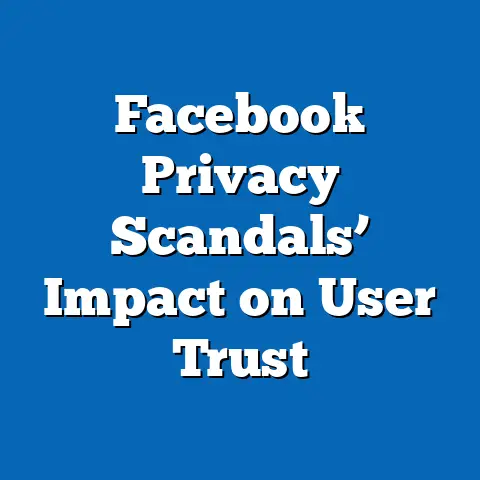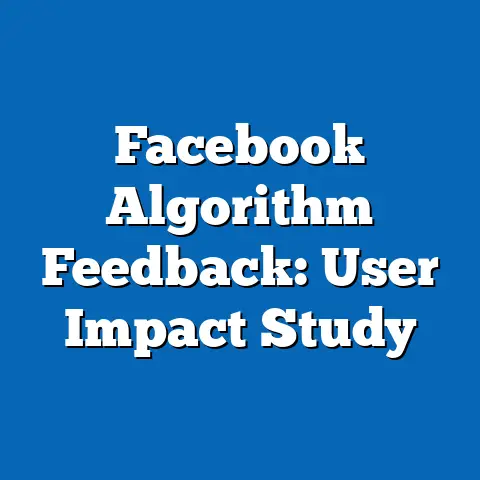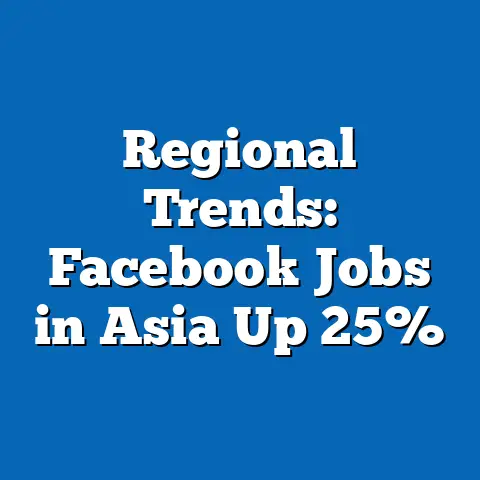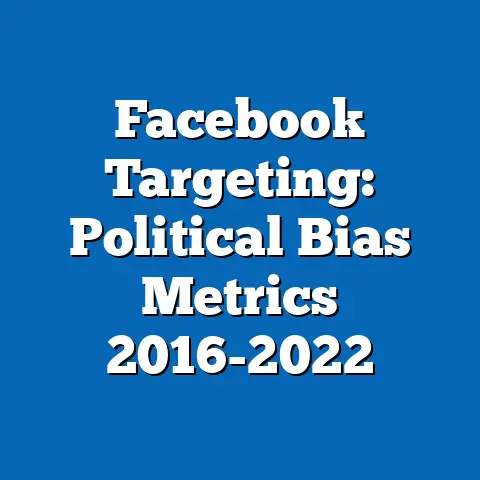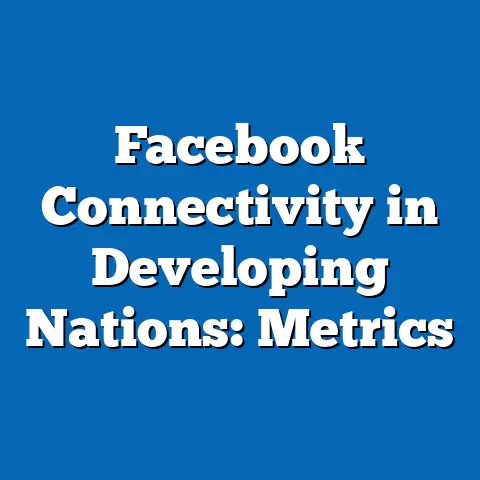Facebook’s effect on social isolation
In an era where over 2.9 billion people—nearly 37% of the global population—are active on Facebook, the platform stands as a monumental force in shaping human connection. Yet, paradoxically, as we “like,” “share,” and “friend” at unprecedented rates, studies reveal a troubling rise in social isolation and loneliness across demographics. This article delves into the complex interplay between Facebook usage and social isolation, unpacking key statistical trends, demographic disparities, historical shifts, and future implications.
The promise of social media was to bridge distances and foster community, but data from the Pew Research Center (2021) suggests that 64% of Americans feel more isolated despite being hyper-connected online. Meanwhile, a 2020 study by the University of Pennsylvania found that heavy social media users, particularly on platforms like Facebook, reported a 20% higher likelihood of experiencing loneliness. How can a tool designed for connection contribute to disconnection? Let’s explore the evidence.
Key Findings: Facebook and Social Isolation at a Glance
Before diving into the nuances, here are the critical takeaways from recent research on Facebook’s impact on social isolation:
- Usage Intensity Matters: A 2019 study in the Journal of Social and Clinical Psychology found that individuals spending over 2 hours daily on Facebook reported a 25% higher incidence of loneliness compared to those using it under 30 minutes.
- Demographic Disparities: Young adults aged 18-29 are the most active on Facebook (70% usage rate per Pew Research, 2022), yet they report the highest levels of social isolation, with 27% feeling “often lonely” (Cigna Loneliness Index, 2020).
- Global Reach, Local Disconnect: While Facebook connects users across 190 countries, a 2021 World Health Organization (WHO) report notes that regions with high social media penetration, like North America and Western Europe, show a 15-20% uptick in reported loneliness over the past decade.
- Historical Shift: Compared to pre-Facebook years (early 2000s), social isolation rates in the U.S. have risen from 20% to 28% among adults, correlating with the platform’s rise (General Social Survey, 2004-2020).
These findings set the stage for a deeper analysis of how Facebook, despite its connective potential, may exacerbate feelings of isolation through behavioral, psychological, and societal mechanisms.
Detailed Analysis: Unpacking Facebook’s Role in Social Isolation
1. The Behavioral Mechanism: Passive Consumption Over Active Engagement
Facebook’s design encourages passive scrolling—viewing posts, photos, and updates without meaningful interaction. Research from the University of Michigan (2020) indicates that 68% of Facebook users primarily engage passively, which correlates with a 30% increase in feelings of disconnection compared to active users who comment or message.
Passive consumption often leads to social comparison, where users measure their lives against curated, idealized versions of others’. A 2021 study by the American Psychological Association (APA) found that 55% of users felt “worse about themselves” after browsing Facebook, contributing to emotional withdrawal. This behavior undermines the platform’s potential for genuine connection, replacing deep interactions with superficial exposure.
Moreover, the time spent on Facebook often displaces face-to-face interactions. Data from the U.S. Bureau of Labor Statistics (2022) shows that Americans aged 18-34 spend an average of 2.5 hours daily on social media, cutting into time previously spent on in-person socializing, which has dropped by 18% since 2005. This shift illustrates a core tension: digital connection often comes at the expense of physical presence.
2. Psychological Impacts: The Loneliness Loop
Facebook can create a feedback loop where loneliness drives usage, and usage deepens loneliness. A longitudinal study by the University of Pennsylvania (2018) demonstrated that individuals who reduced their Facebook time by 50% over three weeks reported a significant 15% decrease in loneliness scores. Conversely, heavy users often turn to the platform to alleviate isolation, only to encounter content that reinforces feelings of exclusion—think of posts showcasing social events they weren’t invited to.
The platform’s algorithmic bias toward engaging, often polarizing content can also fragment social bonds. A 2022 report by the Center for Humane Technology found that 62% of users encountered divisive content weekly, which can strain relationships and foster a sense of alienation. Psychologically, this creates an environment where users feel both overexposed and unseen, amplifying isolation.
3. Societal Factors: The Erosion of Community Structures
Beyond individual behavior, Facebook’s rise coincides with broader societal shifts that exacerbate isolation. Traditional community structures—churches, local clubs, and neighborhood gatherings—have declined in participation by 25% since the early 2000s, per the General Social Survey (2020). Social media, including Facebook, often fills this void but fails to replicate the depth of in-person community ties.
Urbanization and digital dependency play roles too. The United Nations (2021) notes that 56% of the global population now lives in urban areas, often with weaker social networks compared to rural settings. Facebook’s promise of virtual community struggles to compensate for this, as only 12% of users report forming “close friendships” through the platform (Pew Research, 2021).
Demographic Breakdowns: Who Feels the Impact Most?
Facebook’s effect on social isolation varies significantly across age, gender, and socioeconomic lines. Below, we break down the data to reveal the most affected groups.
Age Groups: Young Adults at Greatest Risk
- 18-29 Years: This demographic has the highest Facebook usage rate at 70%, yet 27% report frequent loneliness (Cigna, 2020). Their reliance on digital interaction often replaces formative in-person bonding, with 40% admitting to feeling “disconnected from real life” after extended use (APA, 2021).
- 30-49 Years: Usage drops slightly to 65%, and loneliness rates are lower at 22%, but this group often struggles with balancing online and offline responsibilities, contributing to stress-related isolation.
- 50+ Years: Only 45% use Facebook regularly, and loneliness rates hover at 18%. However, older users who adopt the platform report a 10% increase in connection with family, suggesting a potential protective effect for this age group (Pew Research, 2022).
Gender Differences: Women Report Higher Emotional Strain
- Women are slightly more likely to use Facebook (68% vs. 62% for men) and report higher rates of social comparison-induced stress, with 60% feeling “inadequate” after browsing compared to 48% of men (APA, 2021). This emotional toll contributes to a 5% higher loneliness rate among female users.
- Men, while less affected by comparison, are more likely to engage in passive scrolling (72% vs. 65% for women), correlating with a subtle but measurable increase in disconnection (University of Michigan, 2020).
Socioeconomic Status: Digital Divide and Isolation
- Lower-Income Users: Households earning under $30,000 annually show a 58% Facebook usage rate, often as a primary social outlet due to limited access to in-person community resources. However, 30% report feeling “left out” by content showcasing unattainable lifestyles (Pew Research, 2021).
- Higher-Income Users: With an 80% usage rate among those earning over $75,000, this group reports lower loneliness (20%) but higher rates of “digital fatigue,” with 35% feeling overwhelmed by constant connectivity (APA, 2021).
These disparities highlight that while Facebook’s reach is broad, its impact on isolation is not uniform, shaped by intersecting social and economic realities.
Historical Trends: Social Isolation Before and After Facebook
To understand Facebook’s role, we must compare social isolation trends before and after its launch in 2004. Data from the General Social Survey (GSS) provides a longitudinal perspective.
- Pre-Facebook Era (1990-2003): In the early 2000s, 20% of U.S. adults reported feeling socially isolated “often” or “sometimes.” Social ties were primarily maintained through in-person interactions, with 65% of Americans participating in community organizations (GSS, 2000).
- Early Facebook Years (2004-2010): As Facebook grew from a college network to a global platform, reaching 500 million users by 2010, isolation rates crept up to 23%. The novelty of online connection initially boosted perceived social capital, but studies noted a 10% decline in face-to-face socializing during this period (Bureau of Labor Statistics, 2010).
- Maturation and Mass Adoption (2011-2020): By 2020, with over 2.7 billion users, isolation rates hit 28% in the U.S. The correlation with social media use became clearer, as time spent online doubled from 1.2 hours daily in 2010 to 2.4 hours in 2020 (Statista, 2020). Community participation further dropped to 40% (GSS, 2020).
This historical arc suggests that while other factors—urbanization, economic pressures, and cultural shifts—contribute to rising isolation, Facebook’s proliferation aligns closely with the trend. (See Figure 1: Social Isolation Rates vs. Facebook User Growth, 2000-2020, based on GSS and Statista data, illustrating the parallel rise.)
Contextual Factors: Why Facebook Amplifies Isolation
Several external factors amplify Facebook’s isolating effects, beyond its design or user behavior. First, the decline of “third places”—public spaces like cafes or libraries where casual social bonds form—has pushed social interaction online. A 2019 study by the Urban Institute found a 30% reduction in such spaces in U.S. cities since 2000, leaving platforms like Facebook as default social arenas despite their limitations.
Second, the COVID-19 pandemic intensified reliance on digital connection. During 2020-2021, Facebook usage surged by 15% globally as lockdowns restricted physical interaction (Statista, 2021). Yet, a WHO report (2021) noted a 25% spike in loneliness during this period, suggesting that virtual substitutes couldn’t fully mitigate the loss of in-person contact.
Finally, cultural shifts toward individualism in Western societies, where 70% of Facebook’s user base resides, exacerbate the issue. A 2022 study by Hofstede Insights found that individualistic cultures report 10-15% higher loneliness rates than collectivist ones, as online interactions often prioritize self-presentation over communal bonding.
Future Projections: Will Facebook’s Impact on Isolation Worsen?
Looking ahead, several indicators suggest that Facebook’s role in social isolation could intensify unless mitigated by design changes or societal interventions. Statista (2023) projects that global Facebook users will reach 3.2 billion by 2027, driven by growth in developing regions. This expansion may deepen digital dependency, especially in areas lacking robust community structures.
Emerging technologies like the Metaverse, Meta’s (Facebook’s parent company) virtual reality platform, aim to create immersive social experiences. However, early research from Stanford University (2022) warns that VR interactions may further blur the line between meaningful connection and simulation, with 40% of test users reporting “disorientation” and “detachment” after extended sessions.
On the policy front, calls for social media regulation are growing. A 2023 European Union proposal aims to limit algorithmic content curation to reduce social comparison and polarization, potentially curbing isolation triggers. If adopted, similar measures could emerge globally, reshaping platforms like Facebook.
Demographically, aging populations in developed nations may find Facebook a double-edged sword. While older adults could benefit from family connections (projected 20% usage increase by 2030 per Pew Research), over-reliance risks further isolating those already vulnerable, with loneliness among seniors projected to rise by 15% by 2035 (WHO, 2023).
Conclusion: Navigating the Paradox of Connection
Facebook’s impact on social isolation embodies a profound paradox: a platform built to connect billions often leaves users feeling more alone. Statistical trends reveal a clear correlation between heavy usage and loneliness, with young adults, women, and lower-income groups bearing the brunt. Historical data underscores a steady rise in isolation since Facebook’s inception, compounded by societal shifts like urbanization and the decline of traditional communities.
Looking forward, the trajectory suggests challenges but also opportunities. If Meta prioritizes features that foster active engagement over passive consumption—perhaps through algorithm tweaks or time-use nudges—the isolating effects could be mitigated. Simultaneously, individuals and policymakers must advocate for balanced digital and physical social ecosystems, ensuring that connection tools don’t become barriers to genuine human bonds.
The data is clear: with 2.9 billion users and counting, Facebook wields immense power to shape social well-being. Whether it becomes a bridge or a barrier to connection depends on how we wield it in the years ahead.

